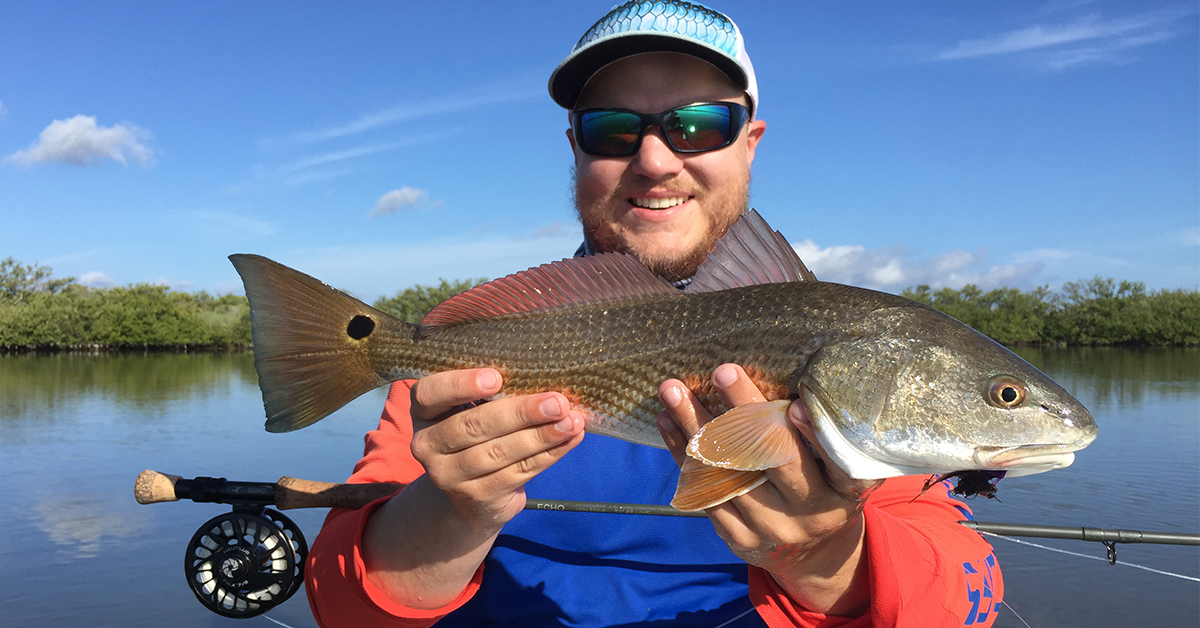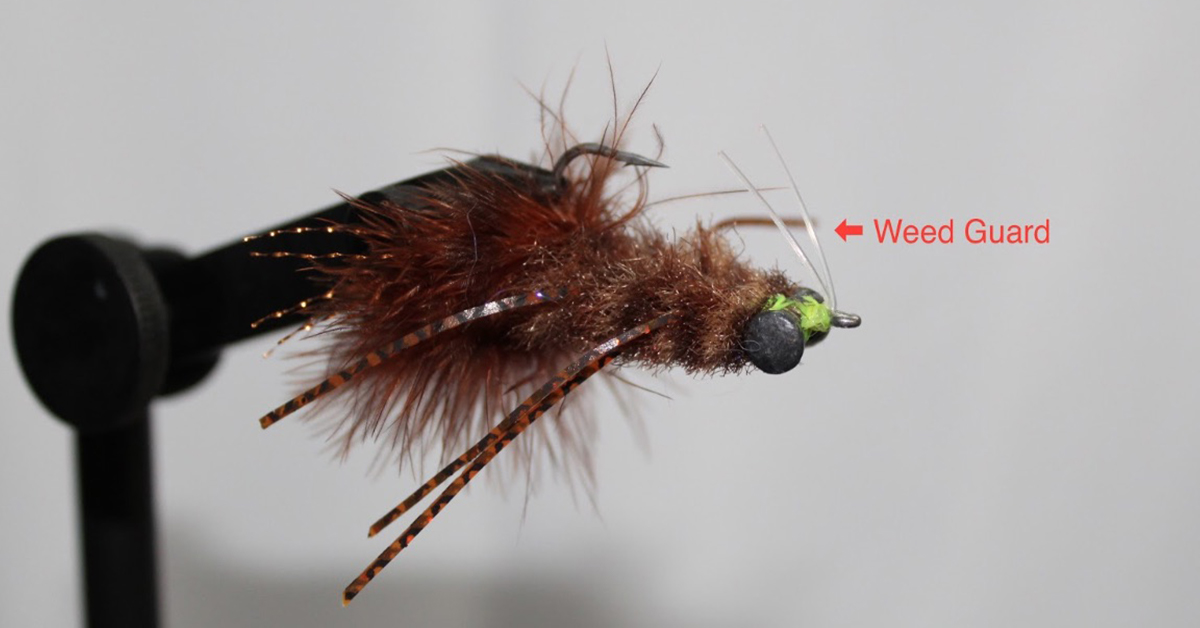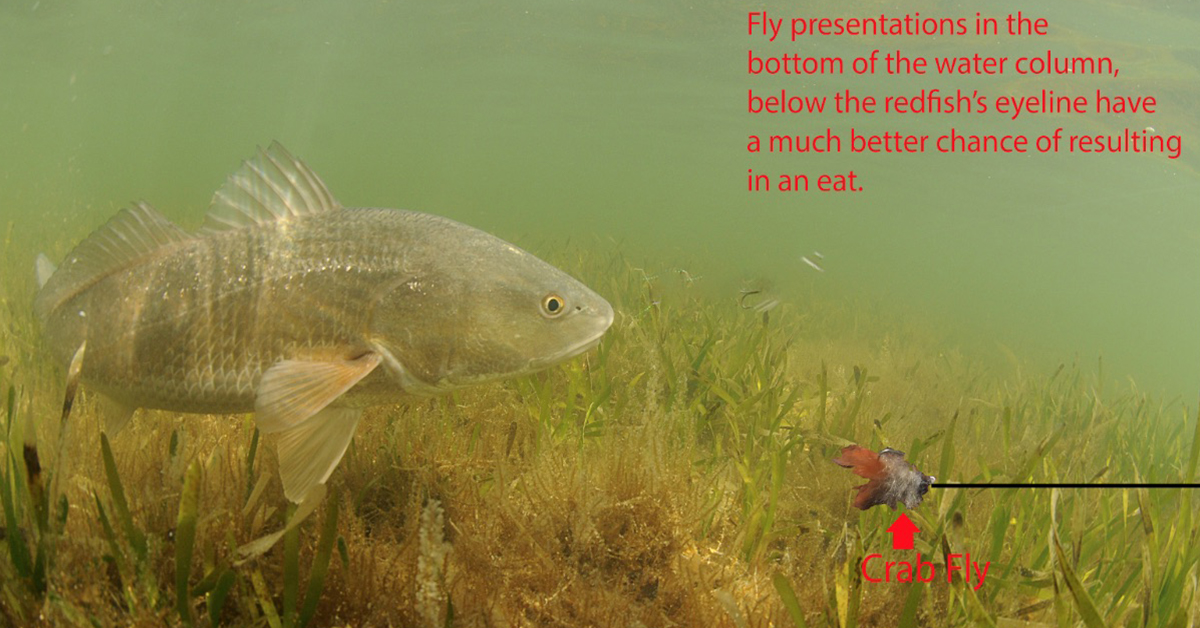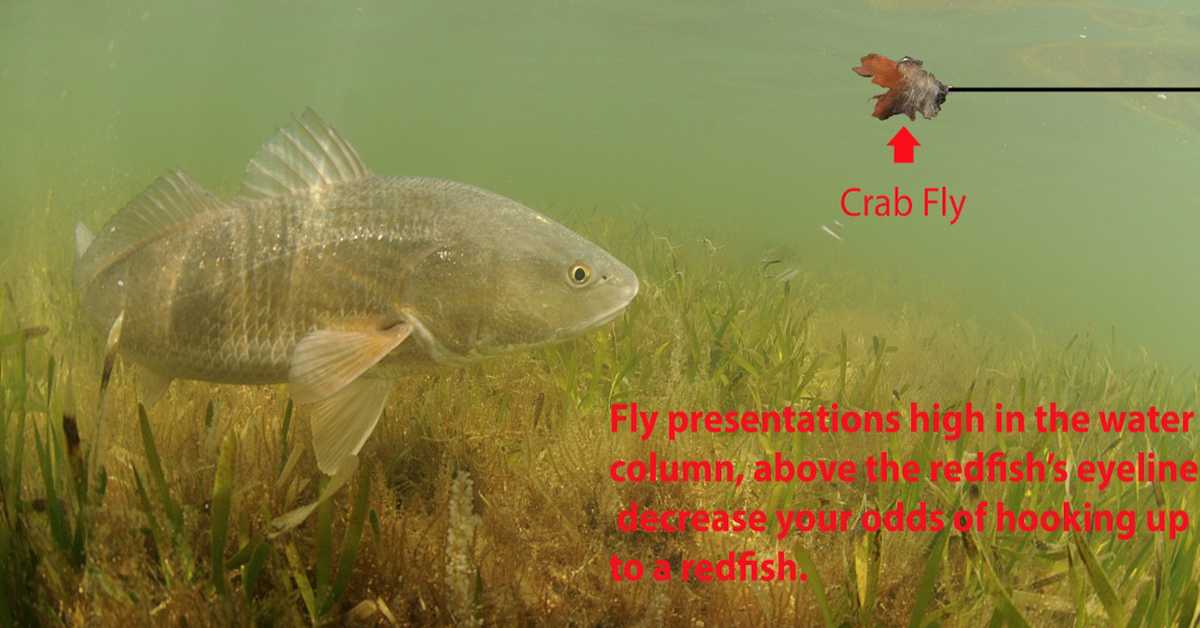5 Biggest Fly Fishing Mistakes for Redfish in Skinny Water
- By: Joseph Simonds
- on
- Found In: Fishing Tips, Fly Fishing, Inshore Fishing, Redfish Fishing Tips

Are you struggling to catch redfish on fly in shallow water?
Are you finding fish but having trouble presenting your fly in a way that results in an eat?
Shallow water redfish are some of the most finicky and challenging fish in the southeast, and there is a learning curve for how to catch these fish.
After speaking with top-notch redfish guides and fly fishermen, we created a list of the top five fly-fishing mistakes anglers make when trying to catch redfish on the flats, including:
- Too Many False Casts [Video]
- Not Using a Weed Guard
- Rushing the Cast
- Rocking the Boat [Video]
- Making a Flawed Presentation
1. Too Many False Casts
Redfish on the flats are easily spooked and hypersensitive to their environment. When these fish sense something is out of the ordinary, they will bolt and look for a safer environment.
False casts can send a redfish running in a split second and is often the number-one mistake new fly anglers make when learning to catch redfish. Redfish can sense your line coming in their direction and will take too many false casts as a threat to their safety.
To avoid this, try to limit yourself to one backcast before presenting the fly to the fish. This allows you to get a cast to the redfish without ever sending an object (your fly line) into their view.
The best way to do this is by having a strong double haul that allows you to shoot your line to the distance you need with one single backcast. Check out the Orvis video below to see a great example of how to double haul and when to use it in your casting:
Limiting yourself to one backcast may cause you to not be able to cast as far, but you’ll ultimately double your chances of catching fish this way.
2. Weed Guard is a Must
Grass flats are some of the best places to sightfish reds on fly. These flats provide shallow-water feeding grounds for redfish to gorge on shrimp, crabs, mullet and more.
The grass on these flats provides shelter for baitfish and crustaceans, which is why redfish get up on the flats to hunt their prey through the grass.
The most effective way to present your fly to redfish is by slowly working it across the bottom. This often means you’ll have to drag your fly through grass and weeds in order to get a good presentation in front of the redfish. For this, you’ll need a weed guard.
A weed guard is a small piece of strong monofilament line that is tied onto the front of the fly to protect the hook from getting caught in the grass.

Flies without weed guards will instantly pick up grass on the hook and prevent the fish from ever even seeing the fly. This will kill any chance of the red eating your fly.
Adding a weed guard to your flies will allow you to strip your fly through the grass and increase your chances of a redfish seeing it.
Learn more about the Insider Fishing Club
3. Wait for the Right Opportunity
The flats provide a shallow estuary that gives anglers the chance to see redfish from a good distance before making a cast to them.
Many times, an angler may run into a redfish that is moving in a way that is not conducive to getting a good presentation in front of them — such as when redfish have their backs turned to the bow of the boat and are moving away from it slowly.
Being patient in this situation is key to catching fish like this. Don’t instantly blast your line at the fish, hoping that, by some miracle, it won’t feel the line land right over its back and spook.
Instead, watch the fish for a minute and wait for it to move into a position that allows you to get a good cast on it. If you’re patient, the red that was going away from you could potentially turn back toward you and allow you to get a high-quality shot at the fish without scaring it.
If you cast at a fish that you have no shot at catching, you could spook it, which could in turn send a whole school of reds running from the flat.
4. Don’t Rock the Boat
Remember when I mentioned redfish are hypersensitive?
Many fly fishermen sway their bodies lightly back and forth when fly-casting, usually by gently shifting weight from one foot to the other as the fly rod moves back and forth.
Doing this in shallow water on a small boat can create tiny waves. These small waves can send pulses down a redfish’s body, which will cause them to spook almost immediately.
To avoid this, take a nice, wide stance on the bow and focus on having a loose and relaxed cast where your feet stay still and your body remains upright.
You can also minimize this issue by casting from the bow to the stern (front of the boat to the back of the boat), which distributes your weight more evenly than if you cast from port to starboard (side to side).
To learn more about how to properly present your fly quickly to a fish from the bow of a boat, check out the Orvis video below:
Being ready on the bow is critical to make the most of the shots you get.
5. Presentation, Presentation, Presentation
The single most important aspect of catching redfish is how you present the fly to the fish.
There are many factors that go into presenting the fly to these fish, such as how far to lead the fish, what the wind is doing, and how heavy your fly is.
Lead the Redfish
The first factor fly anglers should worry about is where they place the fly in front of the fish.
One of the most common presentation mistakes for new fly anglers is landing the fly too close to the redfish. When this occurs, redfish feel the fly line land on the top of the water, which startles them and sends them running for safety.
How far you need to lead reds depends on a number of factors that can change daily, but generally, you want your fly to land softly about three feet in front of the fish’s nose.
Casting the fly farther away than this could mean the red never sees your fly, especially if it changes the path it’s on. Casting the fly closer than this to the fish will almost always result in a spooked fish.
Let the Fly Settle
In all the excitement of seeing a redfish and making a cast to it, many anglers forget to let their fly settle to the bottom of the water column. Getting your fly down to the bottom of the water column is crucial, as redfish cruise the flats searching the bottom for baitfish and crustaceans.
Below is an example of where your fly should be in the water column to give you the best chance of hooking up to a red on fly:

After making your cast, wait for at least a full second count to allow your fly to drop in the water column before stripping it. This will give the redfish a better chance of seeing your fly and will give your fly a more realistic imitation of bait scurrying away from a predator.
Flies presented to reds above their eyeline and high in the water column are rarely eaten by redfish and can result in many missed opportunities.
Below is an example of a fly too high in the water column for a redfish to normally eat:

Learn more about the Insider Fishing Club
Don’t Overcast
It’s important to be aware of how long your leader is and how that plays a role in how you present your fly to the redfish.
Many anglers use the end of their fly line as an indication of where their fly is in the water — ignoring the fact that the leader adds extra distance to where their fly actually is.
For example, say you have a nine-foot leader on your fly line. This means that the fly will be nine feet past the end of the fly line.
When casting to redfish, it’s critical to keep this in mind. With a nine foot leader, if you want to lead the redfish with your fly by three feet, the end of your fly line should land close to 12 feet short of the target zone you are casting to.
Conclusion
Redfish are challenging fish to catch on fly, but getting one to hand is extremely rewarding.
When fly-fishing for redfish in shallow water always remember the following:
- Keep your false casts to a minimum
- Use flies with a weed guard
- Wait for the right opportunity to present your fly to the fish
- Don’t rock the boat
- Proper presentation is critical
The best way to avoid making mistakes on the water is by practicing and preparing off the water. Grab your fly rod and make some targets in the backyard or an open field and practice casting as if you were encountering redfish in different situations on the flats.
The work you put in off the water with your fly rod is what will make you a great angler on the water.
Related Posts:
1. 3 Shortcuts For Catching Redfish Like A Pro [VIDEOS]
2. The Best 4 Tactics for Catching Redfish Near Mangroves (Video)
3. The Best Lures For Catching Redfish [Surprise Answer]
Related Course:
Then you’ve got to see this private fishing club! Here’s what you’ll receive today:Do YOU Want New Fishing Spots In Your Area?
Click here to join today.
Related categories:
STOP WASTING TIME ON THE WATER!
Do what the “SMART ANGLERS” are doing and join the Insider Club.
Here’s what you’ll receive today when you join:
- Weekly fishing reports and TRENDS revealing exactly where you should fish every trip
- Weekly “spot dissection” videos that walk you through all the best spots in your area
- Exclusive fishing tips from the PROS you can’t find anywhere else
- Everything you need to start catching fish more consistently (regardless if you fish out of a boat, kayak, or land).










Great information and tactics
E exceptional article txs Bill
Great information thanks
I like to do a little fly fishing but am far from accomplished. Just loved that first video. I have been listening to people say these things but not hearing them. Know what I mean?